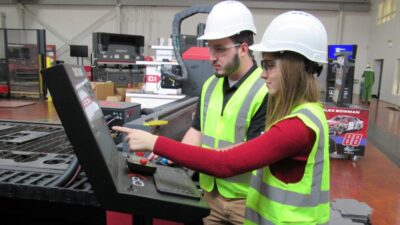Integrated safety systems are proven to improve productivity, safety, and the bottom line. Really? So, what’s holding back the tsunami of industry picking up the pace to apply integrated safety systems across manufacturing?

Integrated safety systems are proven to improve productivity, safety, and the bottom line. Really? So, what’s holding back the tsunami of industry picking up the pace to apply integrated safety systems across manufacturing?
In my experience there is no single cause holding the market from wholesale adoption of integrated safety systems. To a large degree we find ourselves still educating large pockets of manufacturing across the US. Many still haven’t completed their first risk assessment nor are they aware of the changes in safety standards allowing machine guarding that’s not hard wired.
We’ve also evaluated the “Rogers Innovation Adoption Curve” theory to find that the market has moved from the “early adopter” stage to the “early majority” stage. With that said, and with 85% of the market is still ahead, what’s holding back the tsunami? Is the market still caught up in “the last forty year legacy” of – this is the way we’ve been implementing machine safety and it works? Or, is it reluctance to change to something new? Possibly it’s a lack of trust, again related to the change issue? I hear some people talk about the slightly higher cost of the new components. But, when they understand that dozens of engineering hours and wiring & checkout are eliminated, they quickly realize the potential for savings. So, what is it – really?
I believe there’s one undeveloped “go-to-market” strategy from suppliers which could play a significant role in answering this question. Many suppliers are still using trusted and conventional “go-to-market” channels for marketing and selling safety automation. These are the same channels they’ve used for the last forty years marketing and selling automation controls. You might ask – what’s wrong with this?
Well, integrated safety systems have a unique message that the trusted channels aren’t used to delivering. Cutting to the chase, ten years of early adopters say that integrated safety systems:
- Improve organizational behavior
- Serve as a bridge to:
- Improve practices
- Help boost productivity
- Increase efficiency, and
- Improve overall safety, sustainability, and business performance.
The trusted channels don’t as a rule deal with these metrics but company executives do every day. The paradigm shift in machine guarding technology started ten years ago by delivering integrated safety systems. In my opinion, automation suppliers of integrated safety systems can also have a positive paradigm shift in their market share if they started delivering compelling messages to manufacturing executives.
Manufacturing executives have influence over the adoption rate.
Your comments or suggestion are always welcome so please let us know your thoughts. Submit your ideas, experiences, and challenges on this subject in the comments section below. Click on the following text if you don’t see a comments box, then scroll down: Machine safety and integrated safety systems.
Related articles:
Designing In Machine Guarding
Machine Safety And Your Safety Culture
How To Integrate Safety
Contact: www.jbtitus.com for “Solutions for Machine Safety”.



